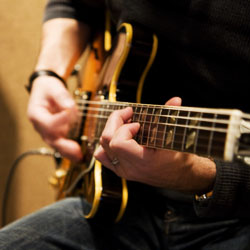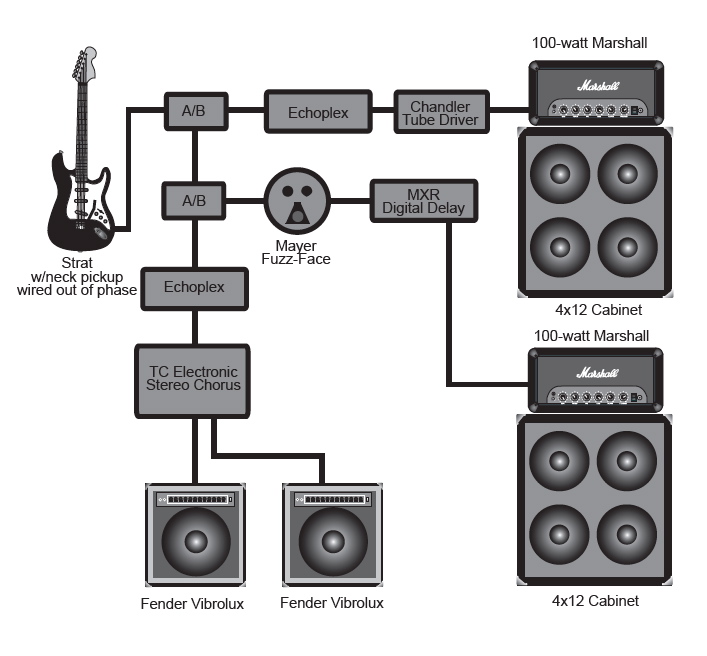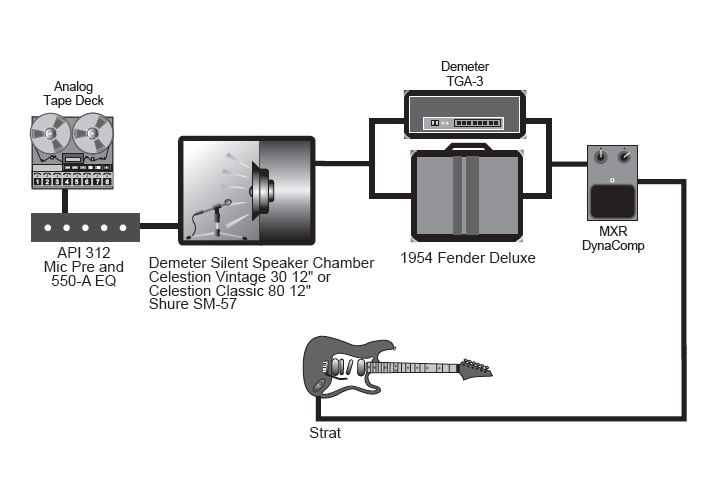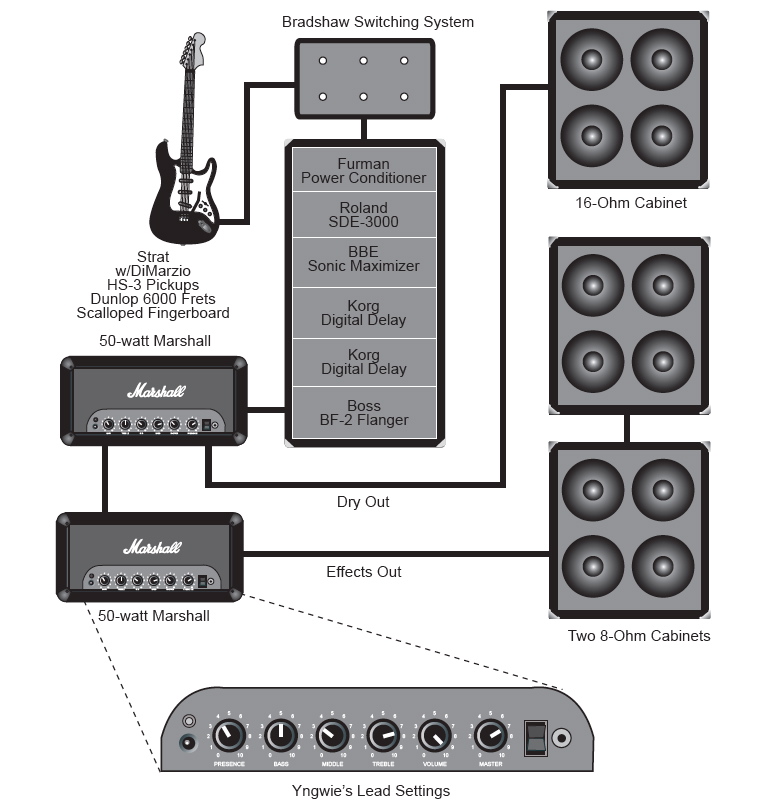
Eric Johnson
Eric Johnson is a tone purist and therefore runs a fairly straightforward setup.
He gets almost all of his tone from the amp, invoking a Chandler Tube Driver judiciously and mostly for increased sustain rather than distortion.
Johnson employs two A/B boxes, which gives him three separate audio paths to choose from.
The first path goes to a tapedriven Echoplex and then into the Chandler Tube Driver and into a 100-watt Marshall head and cab.
The second path goes to a Mayer Fuzz Face and then to an MXR Digital Delay before also going to a 100-watt Marshall head and cab.
The third path begins with an Echoplex (like path #1), but is then split by a TC Electronic Stereo Chorus (mono in/stereo out) and output to two Fender Vibrolux amps.
Sonny Landreth
Slide guitarist Sonny Landreth has one of the most unique sounds going, partly because he employs an actual miked speaker in his setup.
He isolates and encloses the speaker and mic, and often works an honest-to-goodness Leslie cabinet into his rig (no simulators here!). A healthy overdrive and a mature and evolved vibrato technique round out this singular slide artist’s setup.
Known for his monstrous slide chops and widely varied repertoire, Landreth is also a purist when it comes to sound. He goes through an old red MXR Dyna Comp to get a smooth, sustained sound, and then into either a Demeter TGA- 3 or a 1954 Fender Deluxe amp.
From there, things get interesting. The speaker out goes to a Demeter Silent Speaker Chamber, which is an iso-cab housing a Celestion Vintage 30 or Classic 80 speaker and a mic.
The mic is either an SM57 or a custom-specified mic supplied by Demeter. From there the signal gets treated to an API mic pre with EQ and delivered straight to analog tape.
Yngwie Malmsteen
Much of Yngwie Malmsteen’s expressive phrasing technique can be attributed to his scalloped-fretboard Strat.
The increased distance between the string and the fretboard that the scallop creates allows him to control his vibrato to a great degree. By pushing down on the string and pulling it from side to side, Malmsteen creates some of the most expressive notes around—especially when he employs nearinfinite sustain.
That sustain is created by two maxed-out 50-watt Marshall heads, one outputting a dry sound, the other outputting the effected sound.
Note that one amp feeds a cabinet wired at 16 ohms, while the other feeds two 8-ohm cabs in series, so that the speaker output is equivalent.
Malmsteen is one of the only guitarists to use a sonic enhancer (a BBE Sonic Maximizer) in creating his sound, which he credits with adding a little more sizzle and definition to his top end.



